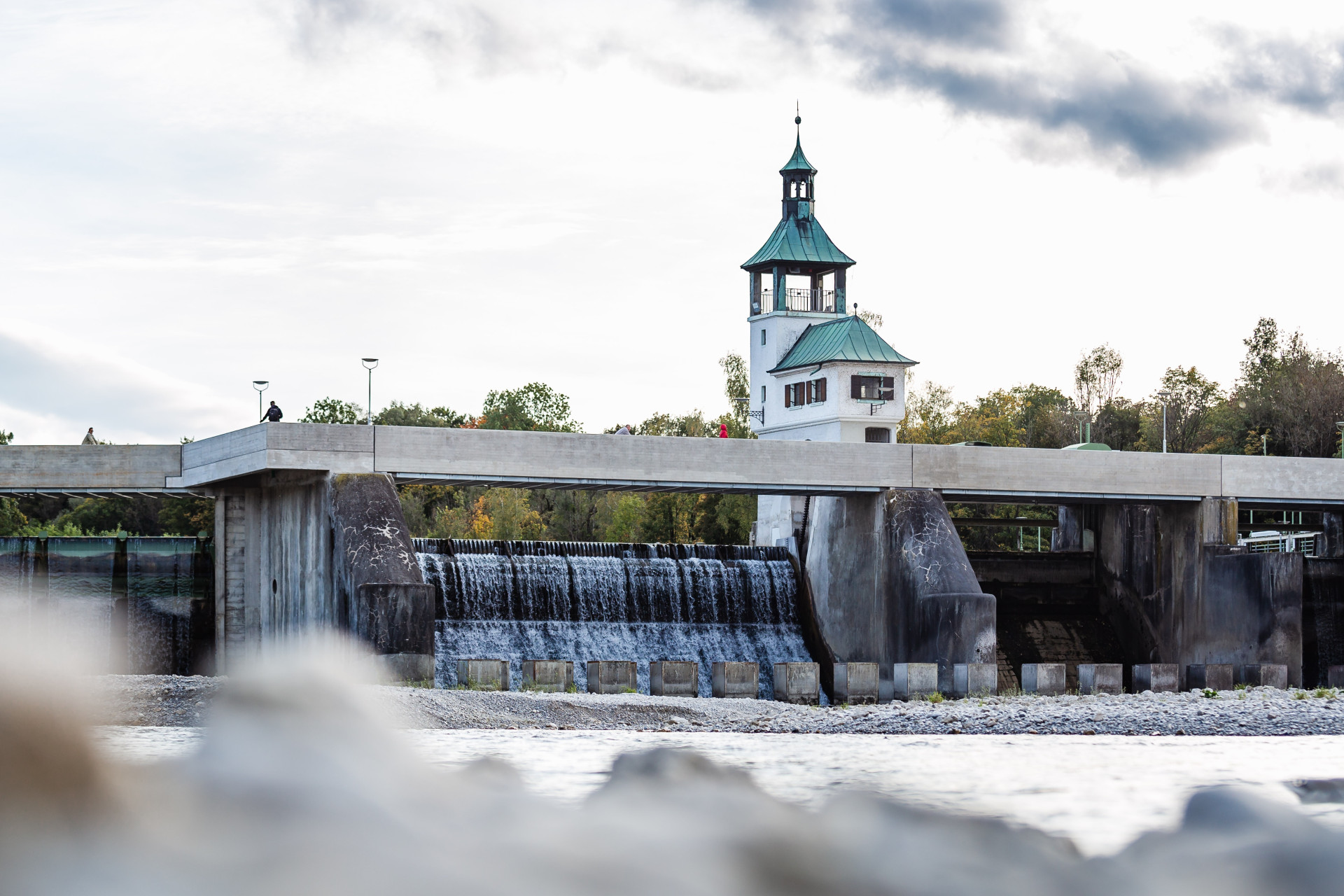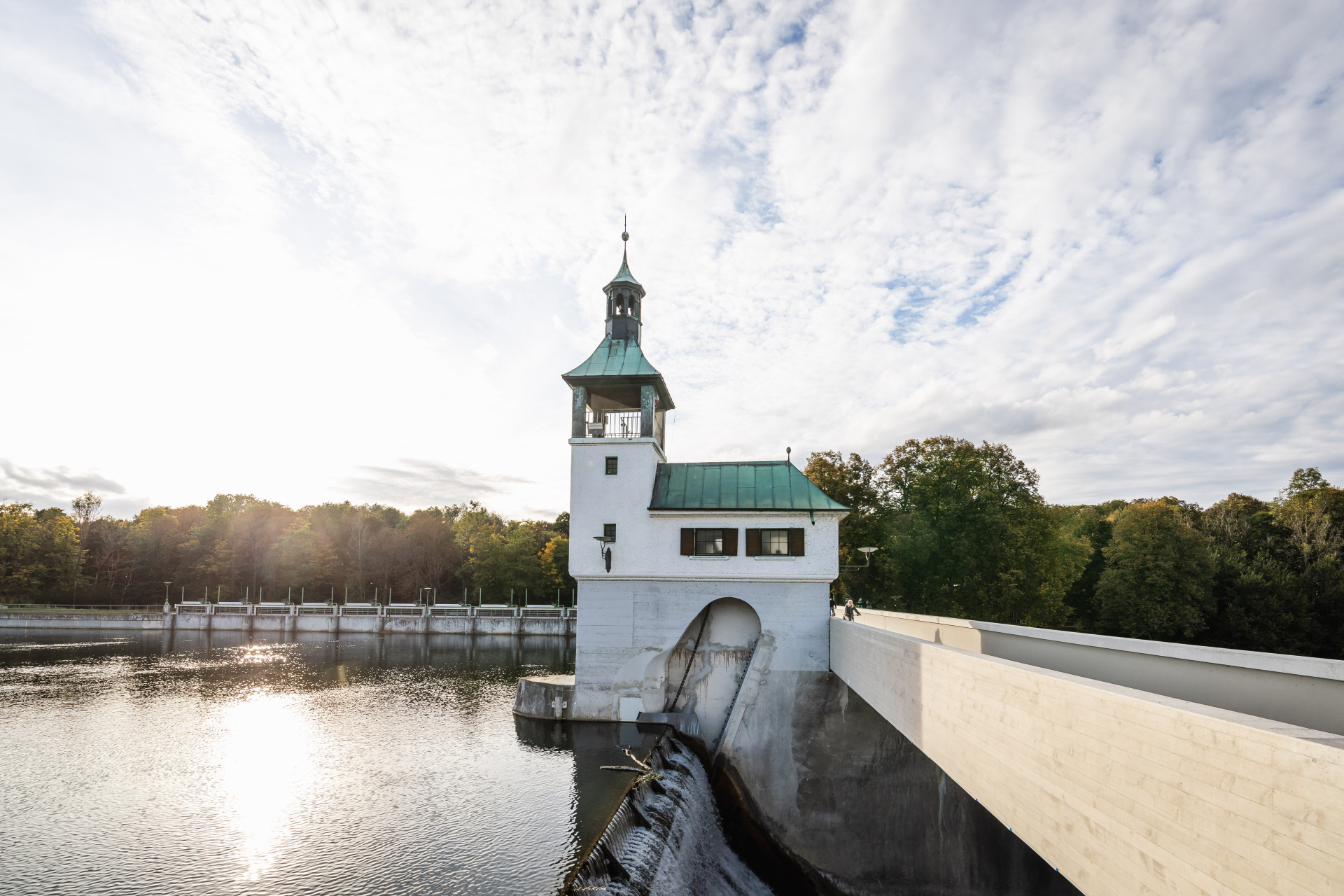
1
Hochablass (Lech weir)
Since the late Middle Ages, the Hochablass has served to mark the beginning of Augsburg's use of hydropower. The water for most of the city's canals is diverted at this weir. Apart from a few renovated technical parts, today's system dates from 1911/12.
Building history and description
- weir in reinforced concrete construction, gear house and bell tower in the Lech
- between districts Spickel-Herrenbach and Hochzoll; Oberländer Straße 168
- direct spatial proximity to the historical drinking waterworks at the high drain and ice canal
- Construction 1911/1912
- Modification and renovation 1935, 1970 and 1999-2003
- 2012-2013 installation of a fully submerged hydropower plant with two turbines (supplies 4,000 households with electricity)
- 2017 renewed renovation work
- Architects (of 1912) Edward von Hummel, Alfred Kunz, Otto Holzer, sculptor Josef Köpf
- Today's facility with pedestrian walkway
- stone personifications of rafting (with rafting rope and rope, pointing to the significant until the First World War Lechflößerei) and trade or Industria (with turbine wheel, indicates the role of the Lech as a source of power for the factories)
Use and purpose
- weir for the discharge of river water into the drainage channels
- Defend the wire at high drain since 1346 written
- Succession of the last wooden weir destroyed by the "flood of the century" in 1910
- Areal since 18th century popular, urban recreational area, neighboring restaurant destroyed in 1910
- technical structure:
- Outflow and overflow of the cow lake
- two fixed weirs with 6.3m drop height
- three weirs with self-regulating counterweight flaps
- 20m long roller weir with closing height of 3m (= bottom outlet of the weir to drain gravel (bedding))
- 12m long weir with double contactor (closure height 2.5m, passage of up to 55 cubic meters of water per second, separate regulation of the upper and lower flow through division into two)
- weir with fish belly flap for fine regulation of the upper water level
- Fish ladder and gravel sluice with double contactor
- from 2013 new, completely submerged hydroelectric power station on the east side
- High drain and its weir allowed discharge of all Lech canals
- Guiding these canals in the city of Augsburg enabled the innovative raising of spring water by the process water from the Lech and thus the free, public drinking water supply of the whole city
- canals were used for defense (moat)
- canals led through the Lech district (Lech canals in the old town as an official object) and allowed intensive use of mill wheels and thereby flourishing trade and commerce and economic growth of the city
- Channels used for sewage or waste disposal
- Lech canal led under the built up to 1609 by Elias Holl Stadtmetzg, this served as cooling and waste disposal
- central role of the high drain in the water system, in terms of content associated with all objects, direct proximity to the historic drinking waterworks at the high drain, the canoe racing course on the ice canal and the Galgenablass culvert
Authenticity and unique features
- Reservoir largely preserved, appearance corresponds essentially to the state of 1912, structural changes in the 1930s, 1970s, 2012-2013 and redevelopment in 2017
- falls under the Water Resources Act and Bavarian Water Act, ongoing maintenance by the Augsburg Civil Engineering Office (Department of Water and Bridge Construction)
- The key building of the Augsburg water industry, the origin of all canals and the associated wealth of water





